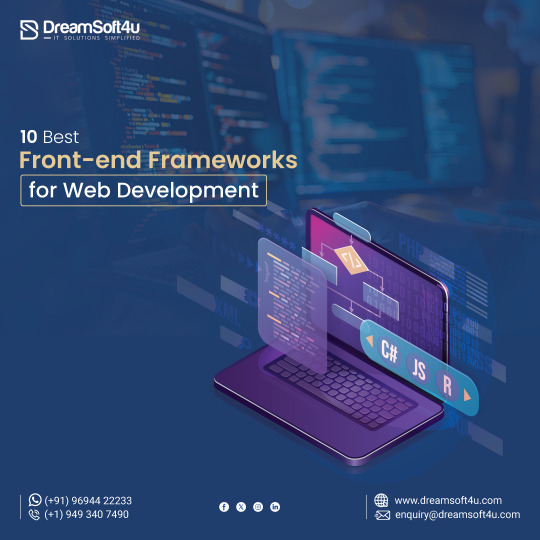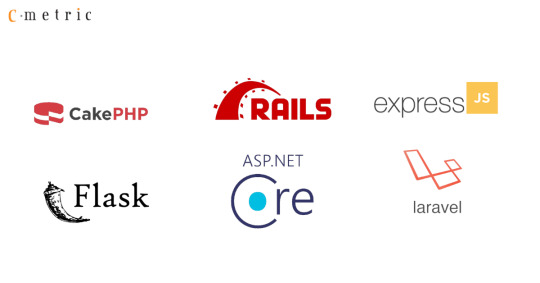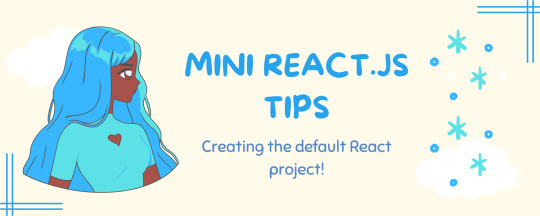#top frameworks for web development
Explore tagged Tumblr posts
Text
Top JavaScript Frameworks to Learn in 2025
In this blog, we shares about What are JavaScript Frameworks & the name of top JavaScript frameworks to help you find the most suitable framework for your development project. We are the top web development company in Rajkot. For best digital marketing services, Contact Aphonic Solutions, now!

#web development company in Rajkot#best digital marketing services#best web development services in India#Top JavaScript Frameworks#What are JavaScript Frameworks
0 notes
Text
#Best CSS frameworks for developers#CSS frameworks for modern web apps#CSS frameworks for responsive design#Modern CSS frameworks 2025#Most popular CSS frameworks#Top CSS frameworks 2025#Top frontend frameworks 2025
0 notes
Text

Frontend frameworks are programs used to build the client side of websites, applications, or other software products. They help to design in less time and have solutions ready, giving designs already written. These frameworks are helpful since they provide ready solutions to everyday necessities, such as navigation menus or forms.
#web frontend framework#front-end frameworks#top frontend frameworks#web frontend frameworks#web app development#frontend developers
0 notes
Text
Node.js Development: Everything You Need to Know in 2025
In 2025, Node.js development continues to be a powerful tool for building efficient, scalable, and real-time applications. This backend JavaScript framework has become a go-to technology for backend development, favoured by developers for its speed, flexibility, and vast ecosystem. Here’s everything you need to know about Node.js development trends, advantages, and key considerations in 2025.
Why Node.js Remains Popular in 2025
Node.js has gained a strong foothold in web and app development due to its high performance and ability to handle large volumes of simultaneous requests, making it ideal for data-intensive applications. Its non-blocking, event-driven architecture allows developers to build scalable web applications that can easily support thousands of concurrent users.
Key Node.js Trends to Watch in 2025
Serverless Architecture: Serverless is growing in popularity, and Node.js serverless applications fit perfectly with this trend. In a serverless environment, developers don’t need to manage server infrastructure; they focus instead on writing code. This approach can reduce development costs and improve scalability, making Node.js a key player in the serverless computing market.
Edge Computing: As demand for faster data processing rises, Node.js for edge computing is becoming crucial. By enabling data processing closer to the data source, Node.js helps reduce latency and improve application performance, particularly in real-time applications.
Microservices Architecture: Microservices are essential for large-scale, modular applications. Node.js, with its lightweight nature, is perfect for Node.js microservices architecture, allowing developers to build small, independent services that can be deployed and scaled individually.
Artificial Intelligence (AI) and Machine Learning (ML) Integration: In 2025, integrating AI and ML models into applications is a significant trend. Node.js with AI and ML is compatible with powerful machine-learning libraries, making it an attractive choice for developers looking to create intelligent applications.
Benefits of Using Node.js in 2025
High Performance: Node.js uses the V8 engine, offering impressive speed and efficient execution of JavaScript. This makes it suitable for applications requiring fast response times, such as real-time applications, chat applications, and IoT devices.
Rich Ecosystem: The Node.js ecosystem, including npm (Node Package Manager), gives developers access to a wide range of reusable modules and libraries. This Node.js ecosystem reduces development time and helps accelerate project timelines.
Cross-Platform Compatibility: Node.js Development cross-platform applications work well across different platforms, making it easier for developers to build applications that run seamlessly on various operating systems.
Scalability: The non-blocking, asynchronous architecture of Node.js for scalable applications makes it easy to scale horizontally, supporting increased workloads as businesses grow.
Best Practices for Node.js Development in 2025
Leverage TypeScript: Using TypeScript with Node.js enhances code quality and reduces bugs, making it a valuable addition to any development project.
Prioritize Security: Security is a primary concern for developers, particularly in 2025, as cyber threats grow more sophisticated. Implementing Node.js security best practices, like input validation and rate limiting, is essential for protecting applications.
Adopt CI/CD Pipelines: Continuous integration and continuous deployment (CI/CD) pipelines streamline development and ensure faster, more reliable Node.js deployments.
Conclusion
Node.js continues to be a versatile and high-performance choice for backend development in 2025. Its adaptability to trends like serverless architecture, microservices, and AI integration makes it a prime technology for building future-ready applications. By leveraging the power of Node.js developers, businesses can develop scalable, efficient, and intelligent solutions to stay ahead in the digital landscape.
#Node.js development trends 2025#Node.js development best practices#Node.js for web development 2025#latest features in Node.js 2025#Node.js performance optimization#Node.js vs other frameworks 2025#Node.js for backend development#Node.js security best practices#scalable Node.js applications#future of Node.js development#full-stack development with Node.js#Node.js development services USA and UK#how to hire Node.js developers#Node.js in microservices architecture#Node.js for real-time applications#top Node.js frameworks 2025#Node.js development tools#asynchronous programming in Node.js#Node.js for enterprise solutions#Node.js and serverless architecture
1 note
·
View note
Text
As we move further into the digital age, frontend development continues to evolve rapidly, driven by the increasing demand for dynamic, high-performance, and user-friendly web applications. In 2024, several frontend development frameworks are set to dominate the landscape, each bringing unique capabilities and benefits to the table. This article will delve into the top frontend frameworks to watch in 2024, with a particular focus on Next.js, React, Vue, and others that are shaping the future of web development.
For more details, visits Ahex Technologies.
#frontend development#frontend development frameworks#top frontend frameworks#Next.js#React#Vue#modern web development#full-stack framework#React applications#ahextechnologies
0 notes
Text
Top Backend Frameworks Shaping Future of Web Development

The future of web development is being significantly shaped by top backend frameworks, which are defining the way modern web applications are conceived, developed, and deployed. These frameworks serve as the cornerstone for building scalable, efficient, and robust web solutions, ensuring that developers can keep pace with the ever-evolving digital landscape.
Frameworks such as ASP.NET Core, Laravel, and Express.js are at the vanguard, each contributing unique features that cater to the diverse needs of the web development community. ASP.NET Core, with its high performance and cross-platform capabilities, is ideal for developers looking to build dynamic web services and applications.
Laravel, renowned for its elegant syntax and expressive codebase, makes complex web development tasks simpler and more intuitive. Express.js, leveraging the power of Node.js, offers a minimalistic yet powerful platform for creating server-side web applications and APIs.
These top backend frameworks are not just tools but enablers of innovation, allowing developers to experiment with new ideas and technologies while maintaining high standards of performance and security.
As they continue to evolve, incorporating advancements in artificial intelligence, machine learning, and cloud computing, they promise to further revolutionize web development, making it more agile, responsive, and aligned with the needs of tomorrow’s digital world. Embracing these frameworks is essential for any web developer aiming to remain at the cutting edge of technology and shape the future of the internet.
0 notes
Text


In the rapidly evolving landscape of mobile app development, businesses are seeking innovative and efficient solutions to stay ahead of the curve. One technology that has gained significant traction is Flutter, a versatile and powerful framework for building cross-platform mobile applications. As the demand for seamless user experiences grows, businesses are turning to the expertise of a trusted mobile app development company in the USA to harness the full potential of Flutter app development services.
#android app development company in usa#mobile app development company in usa#flutter app development services#hybrid app development framework#best app development software#best graphic designer services#best application development company#app development services usa#web and mobile development company#iphone app development usa#ios development companies in usa#android app development company us#mern stack developer services#flutter app development at top
0 notes
Text
Backend frameworks are the technologies used alongside backend programming languages that create the logic and functionality behind a software application.
Backend frameworks for web development have gained so much popularity as we navigate through an era of digital dependence.
In this article we have listed the top 10 backend framework you can opt in 2023
Explore more: https://generaleducator.com/developers-choice-an-overview-of-the-best-back-end-frameworks-in-2023/
0 notes
Text
Mini React.js Tips #1 | Resources ✨

I thought why not share my React.js (JavaScript library) notes I made when I was studying! I will start from the very beginning with the basics and random notes I made along the way~!
Up first is what you'll need to know to start any basic simple React (+ Vite) project~! 💻
What you'll need:
node.js installed >> click
coding editor - I love Visual Studio Code >> click
basic knowledge of how to use the Terminal

What does the default React project look like?

Step-by-Step Guide
[ 1 ] Create a New Folder: The new folder on your computer e.g. in Desktop, Documents, wherever that will serve as the home for your entire React project.
[ 2 ] Open in your coding editor (will be using VSCode here): Launch Visual Studio Code and navigate to the newly created folder. I normally 'right-click > show more options > Open with Code' on the folder in the File Explorer (Windows).
[ 3 ] Access the Terminal: Open the integrated terminal in your coding editor. On VSCode, it's at the very top, and click 'New Terminal' and it should pop up at the bottom of the editor.


[ 4 ] Create the actual React project: Type the following command to initialize a new React project using Vite, a powerful build tool:
npm create vite@latest
[ 5 ] Name Your Project: Provide a name for your project when prompted.

[ 6 ] Select 'React' as the Framework: Navigate through the options using the arrow keys on your keyboard and choose 'React'.

[ 7 ] Choose JavaScript Variant: Opt for the 'JavaScript' variant when prompted. This is the programming language you'll be using for your React application.

[ 8 ] Navigate to Project Folder: Move into the newly created project folder using the following command:
cd [your project name]
[ 9 ] Install Dependencies: Execute the command below to install the necessary dependencies for your React project (it might take a while):
npm install

[ 10 ] Run the Development Server: Start your development server with the command (the 'Local' link):
npm run dev

[ 11 ] Preview Your Project: Open the link provided in your terminal in your web browser. You're now ready to witness your React project in action!


Congratulations! You've successfully created your first React default project! You can look around the project structure like the folders and files already created for you!
BroCode's 'React Full Course for Free' 2024 >> click
React Official Website >> click
Stay tuned for the other posts I will make on this series #mini react tips~!
#mini react tips#my resources#resources#codeblr#coding#progblr#programming#studyblr#studying#javascript#react.js#reactjs#coding tips#coding resources
116 notes
·
View notes
Text
#Building eCommerce sites with React#hire reactjs developers#React eCommerce framework#React.js performance optimization#reactjs web development company#Scalable eCommerce solutions#top reactjs development company
0 notes
Text
Python for Beginners: Launch Your Tech Career with Coding Skills
Are you ready to launch your tech career but don’t know where to start? Learning Python is one of the best ways to break into the world of technology—even if you have zero coding experience.
In this guide, we’ll explore how Python for beginners can be your gateway to a rewarding career in software development, data science, automation, and more.
Why Python Is the Perfect Language for Beginners
Python has become the go-to programming language for beginners and professionals alike—and for good reason:
Simple syntax: Python reads like plain English, making it easy to learn.
High demand: Industries spanning the spectrum are actively seeking Python developers to fuel their technological advancements.
Versatile applications: Python's versatility shines as it powers everything from crafting websites to driving artificial intelligence and dissecting data.
Whether you want to become a software developer, data analyst, or AI engineer, Python lays the foundation.
What Can You Do With Python?
Python is not just a beginner language—it’s a career-building tool. Here are just a few career paths where Python is essential:
Web Development: Frameworks like Django and Flask make it easy to build powerful web applications. You can even enroll in a Python Course in Kochi to gain hands-on experience with real-world web projects.
Data Science & Analytics: For professionals tackling data analysis and visualization, the Python ecosystem, featuring powerhouses like Pandas, NumPy, and Matplotlib, sets the benchmark.
Machine Learning & AI: Spearheading advancements in artificial intelligence development, Python boasts powerful tools such as TensorFlow and scikit-learn.
Automation & Scripting: Simple yet effective Python scripts offer a pathway to amplified efficiency by automating routine workflows.
Cybersecurity & Networking: The application of Python is expanding into crucial domains such as ethical hacking, penetration testing, and the automation of network processes.
How to Get Started with Python
Starting your Python journey doesn't require a computer science degree. Success hinges on a focused commitment combined with a thoughtfully structured educational approach.
Step 1: Install Python
Download and install Python from python.org. It's free and available for all platforms.
Step 2: Choose an IDE
Use beginner-friendly tools like Thonny, PyCharm, or VS Code to write your code.
Step 3: Learn the Basics
Focus on:
Variables and data types
Conditional statements
Loops
Functions
Lists and dictionaries
If you prefer guided learning, a reputable Python Institute in Kochi can offer structured programs and mentorship to help you grasp core concepts efficiently.
Step 4: Build Projects
Learning by doing is key. Start small:
Build a calculator
Automate file organization
Create a to-do list app
As your skills grow, you can tackle more complex projects like data dashboards or web apps.
How Python Skills Can Boost Your Career
Adding Python to your resume instantly opens up new opportunities. Here's how it helps:
Higher employability: Python is one of the top 3 most in-demand programming languages.
Better salaries: Python developers earn competitive salaries across the globe.
Remote job opportunities: Many Python-related jobs are available remotely, offering flexibility.
Even if you're not aiming to be a full-time developer, Python skills can enhance careers in marketing, finance, research, and product management.
If you're serious about starting a career in tech, learning Python is the smartest first step you can take. It’s beginner-friendly, powerful, and widely used across industries.
Whether you're a student, job switcher, or just curious about programming, Python for beginners can unlock countless career opportunities. Invest time in learning today—and start building the future you want in tech.
Globally recognized as a premier educational hub, DataMites Institute delivers in-depth training programs across the pivotal fields of data science, artificial intelligence, and machine learning. They provide expert-led courses designed for both beginners and professionals aiming to boost their careers.
Python Modules Explained - Different Types and Functions - Python Tutorial
youtube
#python course#python training#python#learnpython#pythoncourseinindia#pythoncourseinkochi#pythoninstitute#python for data science#Youtube
3 notes
·
View notes
Text
Flutter Developers for Hire: Build Better Apps, Faster
In the fast-paced mobile world, speed and scalability matter. That’s why more businesses are turning to Flutter developers for hire to get their apps to market quickly—without sacrificing quality.
Flutter, Google’s open-source framework, enables developers to build natively compiled apps for mobile, web, and desktop—all from a single codebase. But to unlock its full potential, you need the right talent. That’s where Flutternest comes in.
Our team makes it easy to hire Flutter developers who are not only technically sound but also deeply collaborative. From UI/UX design to backend integration and post-launch support, our developers work as an extension of your team.
Whether you’re a startup or an enterprise, having skilled Flutter developers for hire can accelerate your development process and reduce costs. Plus, Flutter’s hot reload feature ensures faster iterations, helping you stay agile and competitive.
Need a partner who gets Flutter and gets your goals? Flutternest connects you with top-tier developers ready to build sleek, scalable, and high-performing applications.
2 notes
·
View notes
Text



Field-level inference: Unlocking the full potential of galaxy maps to explore new physics
Galaxies are not islands in the cosmos. While globally the universe expands—driven by the mysterious "dark energy"—locally, galaxies cluster through gravitational interactions, forming the cosmic web held together by dark matter's gravity. For cosmologists, galaxies are test particles to study gravity, dark matter and dark energy.
For the first time, MPA researchers and alumni have now used a novel method that fully exploits all information in galaxy maps and applied it to simulated but realistic datasets. Their study demonstrates that this new method will provide a much more stringent test of the cosmological standard model, and has the potential to shed new light on gravity and the dark universe.
From tiny fluctuations in the primordial universe, the vast cosmic web emerged: galaxies and galaxy clusters form at the peaks of (over)dense regions, connected by cosmic filaments with empty voids in between. Today, millions of galaxies sit across the cosmic web. Large galaxy surveys map those galaxies to trace the underlying spatial matter distribution and track their growth or temporal evolution.
Observing and analyzing millions of galaxies turns out to be a daunting task. Hence, standard analyses first compress the three-dimensional galaxy distribution into measurements of the spatial correlation between pairs and triplets of galaxies, technically known as the two- and three-point correlation functions (see TOP IMAGE).
These restricted statistics, however, potentially leave out a lot of information in galaxy maps, especially information encoded on smaller spatial scales. In addition, they do not tell us where in the maps to look further, should some surprising result turn up in these statistics. How much more information can be extracted?
A recent study published in Physical Review Letters by MPA researchers and alumni, led by Dr. Minh Nguyen, provides compelling evidence for significant information beyond the reach of two- and three-point functions.
For the study, the team have developed and validated a rigorous probabilistic framework, LEFTfield, to model the clustering of galaxies. How the LEFTfield framework leverages the Effective Field Theory of Large-Scale Structure (EFTofLSS) to produce robust and accurate predictions of the observed galaxy field with high efficiency was the topic of another MPA research highlight.
LEFTfield foward–models the evolution of primordial fluctuations into large-scale structure and galaxy clustering, preserving the entire information in the three-dimensional distribution of galaxies. Further, the LEFTfield forward model is differentiable, allowing for field-level inference (FLI) of both parameters in the cosmological model and the primordial fluctuations from which all structure in the universe emerged.
In the study, the team set up an apples-to-apples comparison between FLI and the standard two-point plus three-point ("2+3-pt") inference. Both inference pipelines adopt the same LEFTfield forward model, and use the observed maps on strictly the same scales, as illustrated by the centre image.
Analyzing the same catalogs of dark-matter halos from the same set of N-body simulations, the team found that FLI improves constraints on the amplitude of structure growth by a factor of 3–5, even with conservative scale cuts in both analyses.
The improvement implies that even without aggressively pushing down to very small scales—where we expect EFTofLSS or even N-body simulations to fail—much more information can still be extracted from galaxy clustering simply by opening up another dimension: getting rid of the compression of the input data.
The lower image compares the constraints on the amplitude of structure growth from the FLI and "2+3-pt" analyses. The parameter σ8 quantifies the typical amplitude of structure in the initial ("linear") density field on a certain scale.
Essentially, galaxy clustering constraints on σ8 probe the growth of structure from the early universe (where we have precise measurements thanks to the cosmic microwave background) to late times. For this reason, this is a parameter that is generally modified in non-standard cosmological models, for example, if gravity is not correctly described by General Relativity, or if dark matter is not cold.
A factor of 5 improvement in parameter constraints effectively "increases" the survey volume by more than an order of magnitude, which is a huge improvement given the time-consuming and expensive process of mapping out the galaxy distribution over a large volume. Moreover, FLI in principle guarantees optimal extraction of cosmological information: there is no data compression, hence no information loss.
While this study used dark matter halos in simulations, the conclusions also hold for significantly more realistic simulated galaxies, which were the subject of a parallel study by the Beyond-2pt Collaboration that includes two researchers from the MPA team, the FLI approach based on the LEFTfield framework again returns unbiased and improved constraint on growth of structure.
Beyond improved parameter constraints, FLI also offers numerous ways to find out where evidence for physics beyond the standard model of cosmology might come from, should such evidence appear.
Since we have samples of universes that are compatible with the data, we can look for those regions most strongly deviant from the standard model, and investigate what is unusual about them. We can also employ independent datasets, for example, by correlating the inferred matter density with gravitational lensing maps, which are an entirely different probe of structure.
The team now set their eyes on applying the novel FLI approach and LEFTfield framework to real data from galaxy surveys. To connect FLI to observations, a better understanding, hence more studies, of how observational systematics impact the model predictions at the field level will be required. A flexible-yet-efficient forward-modeling framework like LEFTfield will be the key for such studies, and for unlocking the full potential of FLI from galaxy maps.
TOP IMAGE: Summary statistics like the two- and three-point correlation functions compress the galaxy field into spatial correlations between pairs and triplets of galaxies (left panel). Field-level statistics bypass the compression step to access the entire information in the galaxy field. Credit: MPA
CENTRE IMAGE: The comparison between FLI and 2+3-point inference adopts the same forward model, LEFTfield, for both inference schemes. The key difference is FLI analyzes the entire galaxy field while 2+3-point inference analyzes only the 2+3-point summaries of the (same) galaxy field. Credit: MPA
LOWER IMAGE: Constraints on the amplitude of growth of structure σ8 are improved by up to a factor of 5 when analyzing the whole galaxy field compared to just the 2- and 3-point correlation functions. Credit: MPA
3 notes
·
View notes
Text
Why Python Will Thrive: Future Trends and Applications
Python has already made a significant impact in the tech world, and its trajectory for the future is even more promising. From its simplicity and versatility to its widespread use in cutting-edge technologies, Python is expected to continue thriving in the coming years. Considering the kind support of Python Course in Chennai Whatever your level of experience or reason for switching from another programming language, learning Python gets much more fun.

Let's explore why Python will remain at the forefront of software development and what trends and applications will contribute to its ongoing dominance.
1. Artificial Intelligence and Machine Learning
Python is already the go-to language for AI and machine learning, and its role in these fields is set to expand further. With powerful libraries such as TensorFlow, PyTorch, and Scikit-learn, Python simplifies the development of machine learning models and artificial intelligence applications. As more industries integrate AI for automation, personalization, and predictive analytics, Python will remain a core language for developing intelligent systems.
2. Data Science and Big Data
Data science is one of the most significant areas where Python has excelled. Libraries like Pandas, NumPy, and Matplotlib make data manipulation and visualization simple and efficient. As companies and organizations continue to generate and analyze vast amounts of data, Python’s ability to process, clean, and visualize big data will only become more critical. Additionally, Python’s compatibility with big data platforms like Hadoop and Apache Spark ensures that it will remain a major player in data-driven decision-making.
3. Web Development
Python’s role in web development is growing thanks to frameworks like Django and Flask, which provide robust, scalable, and secure solutions for building web applications. With the increasing demand for interactive websites and APIs, Python is well-positioned to continue serving as a top language for backend development. Its integration with cloud computing platforms will also fuel its growth in building modern web applications that scale efficiently.
4. Automation and Scripting
Automation is another area where Python excels. Developers use Python to automate tasks ranging from system administration to testing and deployment. With the rise of DevOps practices and the growing demand for workflow automation, Python’s role in streamlining repetitive processes will continue to grow. Businesses across industries will rely on Python to boost productivity, reduce errors, and optimize performance. With the aid of Best Online Training & Placement Programs, which offer comprehensive training and job placement support to anyone looking to develop their talents, it’s easier to learn this tool and advance your career.

5. Cybersecurity and Ethical Hacking
With cyber threats becoming increasingly sophisticated, cybersecurity is a critical concern for businesses worldwide. Python is widely used for penetration testing, vulnerability scanning, and threat detection due to its simplicity and effectiveness. Libraries like Scapy and PyCrypto make Python an excellent choice for ethical hacking and security professionals. As the need for robust cybersecurity measures increases, Python’s role in safeguarding digital assets will continue to thrive.
6. Internet of Things (IoT)
Python’s compatibility with microcontrollers and embedded systems makes it a strong contender in the growing field of IoT. Frameworks like MicroPython and CircuitPython enable developers to build IoT applications efficiently, whether for home automation, smart cities, or industrial systems. As the number of connected devices continues to rise, Python will remain a dominant language for creating scalable and reliable IoT solutions.
7. Cloud Computing and Serverless Architectures
The rise of cloud computing and serverless architectures has created new opportunities for Python. Cloud platforms like AWS, Google Cloud, and Microsoft Azure all support Python, allowing developers to build scalable and cost-efficient applications. With its flexibility and integration capabilities, Python is perfectly suited for developing cloud-based applications, serverless functions, and microservices.
8. Gaming and Virtual Reality
Python has long been used in game development, with libraries such as Pygame offering simple tools to create 2D games. However, as gaming and virtual reality (VR) technologies evolve, Python’s role in developing immersive experiences will grow. The language’s ease of use and integration with game engines will make it a popular choice for building gaming platforms, VR applications, and simulations.
9. Expanding Job Market
As Python’s applications continue to grow, so does the demand for Python developers. From startups to tech giants like Google, Facebook, and Amazon, companies across industries are seeking professionals who are proficient in Python. The increasing adoption of Python in various fields, including data science, AI, cybersecurity, and cloud computing, ensures a thriving job market for Python developers in the future.
10. Constant Evolution and Community Support
Python’s open-source nature means that it’s constantly evolving with new libraries, frameworks, and features. Its vibrant community of developers contributes to its growth and ensures that Python stays relevant to emerging trends and technologies. Whether it’s a new tool for AI or a breakthrough in web development, Python’s community is always working to improve the language and make it more efficient for developers.
Conclusion
Python’s future is bright, with its presence continuing to grow in AI, data science, automation, web development, and beyond. As industries become increasingly data-driven, automated, and connected, Python’s simplicity, versatility, and strong community support make it an ideal choice for developers. Whether you are a beginner looking to start your coding journey or a seasoned professional exploring new career opportunities, learning Python offers long-term benefits in a rapidly evolving tech landscape.
#python course#python training#python#technology#tech#python programming#python online training#python online course#python online classes#python certification
2 notes
·
View notes
Text

Innovation and Cooptation
With Musk’s purchase of Twitter, we see the conclusion of a cycle of innovation and cooptation in the field of communications. In the late 20th century, the dominant political and technological models were monolithic and unidirectional: network television, mass-based political parties. In response, anarchists and other rebels experimented with independent media and underground networks, producing innovative horizontal and decentralized models like indymedia.org. Tech corporations eventually monetized these models as the participatory media of Web 2.0, such as Facebook. Yet from the turn of the century through the uprising of 2020, the lingering horizontal and participatory aspects of the internet in general and social media in particular continued to empower those who sought to achieve more self-determination—witness the “Thank you Facebook” graffiti in Tunisia after the so-called “Arab Spring” uprisings of 2010-2011.
Over the past decade, however, corporations and governments have introduced more and more online surveillance and control. Musk’s acquisition of Twitter is the latest stage in a reactionary clampdown with grim implications.
Musk and his colleagues see capitalism as a meritocracy in which the shrewdest and most hardworking competitors inexorably rise to the top. Hence, presumably, their own success.
Of course, if Musk wishes to prove that his success is not just the consequence of privilege and luck—of fortune and good fortune—he could demonstrate this easily enough by giving away his wealth, cutting his social ties, changing his name, and repeating his supposed rags-to-riches feats a second time. If he were able to climb the pyramid a second time without the benefit of growing up white in apartheid-era South Africa (setting aside the question of his father’s emerald investments for now), we might have to grant a hearing to his claims that the market has elevated him on account of his personal qualities—though that still would not show that capitalism rewards the efforts that are most beneficial for humanity.
According to the Silicon Valley narrative, platforms like Twitter are the inventions of individual entrepreneurs, propelled into being by the finance capital of canny investors.
But Twitter did not simply spring, fully formed like Athena, from the head of company co-founder Jack Dorsey. In fact, it was a modest refinement of a model already demonstrated by TXTmob, the SMS text messaging program developed by the Institute for Applied Autonomy for protests at the 2004 Democratic and Republican National Conventions.[1] Blaine Cook and Evan Henshaw-Plath, anarchist developers who worked alongside Dorsey at his previous company Odeo, helped refine TXTmob and later took the model with them into the conversations with Dorsey that gave rise to Twitter.[2]
If the unrelenting urgency of social media in general and Twitter in particular can be exhausting, that’s to be expected—the infrastructure of Twitter was originally designed for street communications during high-stakes mass mobilizations in which information must go out immediately, boiled down to its bare essentials. It’s not a coincidence that, despite its shortcomings, the platform has continued to be useful to street activists and conflict journalists.
The point here is that innovative models do not necessarily emerge from the commercial entrepreneurism of the Great Men of history and economics. More often, they emerge in the course of collective efforts to solve one of the problems created by the capitalist order. Resistance is the motor of history. Afterwards, opportunists like Musk use the outsize economic leverage that a profit-driven market grants them to buy up new technologies and turn them definitively against the movements and milieux that originally produced them.
We can identify two stages in the capitalist appropriation of the TXTmob model. In the first phase, a framework that was originally designed by volunteers for the use of ordinary protesters was transformed into a publicly traded corporation, around the same time that the open spaces of the early internet were being colonized by the for-profit surveillance systems of Web 2.0. In the second phase, this publicly traded corporation has been transformed into the private plaything of a single entitled tycoon—with consequences that remain to be seen.
Musk claims that his goal is to open up the platform for a wider range of speech. In practice, there is no such thing as “free speech” in its pure form—every decision that can shape the conditions of dialogue inevitably has implications regarding who can participate, who can be heard, and what can be said. For all we might say against them, the previous content moderators of Twitter did not prevent the platform from serving grassroots movements. We have yet to see whether Musk will intentionally target activists and organizers or simply permit reactionaries to do so on a crowdsourced basis, but it would be extremely naïve to take him at his word that his goal is to make Twitter more open.
#elon musk#the muskrat#twitter#xitter#social media#billionaires#anarchism#revolution#climate crisis#ecology#climate change#resistance#community building#practical anarchy#practical anarchism#anarchist society#practical#daily posts#communism#anti capitalist#anti capitalism#late stage capitalism#organization#grassroots#grass roots#anarchists#libraries#leftism#social issues#economy
7 notes
·
View notes
Text
Introduction to SkillonIT Learning Hub- Empowering Rural Talent With World-Class IT Skills
SkillonIT provides IN-Demand IT courses, connecting Rural talent with rewarding IT skills through affordable, accessible and career-focused education. with Guaranteed pathways to internship and high paying jobs, start with us and step into Opportunities at top Tech-leading Companies. Skillonit Learning Hub, located in Buldhana, Maharashtra, is a leading institute dedicated to equipping individuals with cutting-edge technology skills. With a mission to bridge the digital divide, the institute provides high-quality education in various IT and professional development domains. Skillonit focuses on practical, industry-oriented training, ensuring students gain the expertise needed to thrive in today’s competitive job market. The hub is committed to empowering rural talent and shaping the next generation of skilled professionals.

Courses Offered Skillonit Learning Hub offers a diverse range of courses tailored to industry demands, enabling students to master both technical and professional skills.
Blockchain Development — Smart Contracts (Solidity, Rust, Web3.js, Hardhat) — Blockchain Protocols (Ethereum, Solana, Binance Smart Chain, Fantom) — Decentralized Applications (DApps) Development
Front-End Development — HTML, CSS, JavaScript — Frameworks: React.js, Vue.js, Angular — Responsive Web Design & UI Frameworks (Bootstrap, Tailwind CSS)
Back-End Development — Server-side Programming (Node.js, Python, PHP, Java, .NET) — Database Management (MySQL, MongoDB, Firebase, PostgreSQL) — API Development (RESTful APIs, GraphQL, WebSockets)
Full-Stack Development — Front-End + Back-End Integration — MERN Stack Development — Database, Deployment & DevOps Practice
Mobile App Development — Cross-Platform Development (Flutter, React Native)
Unity 3D Game Development — Game Mechanics & Physics — C# Programming for Game Development — Virtual Reality (VR) & Augmented Reality (AR) Integration
Professional UI/UX Design — User Interface Design (Adobe XD, Figma, Sketch) — User Experience Principles — Prototyping, Wireframing & Usability Testing
Professional Graphic Design — Adobe Photoshop, Illustrator, and CorelDraw — Branding & Logo Design — Digital Art & Visual Communication
Digital Marketing — SEO, SEM, and Social Media Marketing — Content Marketing & Copywriting — Google Ads, Facebook Ads & Analytics
Spoken English — Communication Skills & Public Speaking — Accent Training & Fluency Improvement
Personality Development — Business & Corporate Etiquette — Confidence Building & Interview Preparation — Leadership & Teamwork Skills
Location & Contact : Address : Chhatrapati Tower, Above Maratha Mahila Urban, 3rd Floor, Chikhali Road, Buldhana, Maharashtra, 443001.
Contact us
Conclusion : Skillonit Learning Hub is revolutionizing IT and professional education by making technology and essential career skills accessible to aspiring developers, designers, marketers, and professionals. With a strong emphasis on practical learning, industry exposure, and career opportunities, it stands as a beacon of growth for young talent in Buldhana and beyond. Whether you are looking to build a career in tech, marketing, design, or personal development, Skillonit provides the ideal platform to achieve your goals. Join Our Social Community
Skillonit #Education #ITCourses #Buldhana #Maharashtra #IT #Blockchain #Fullstack #Front-end #Back-end #MobileApp #Unity3d #UIUX #Graphicdesign #Digitalmarketing #SpokenEnglish #Personality #development
2 notes
·
View notes